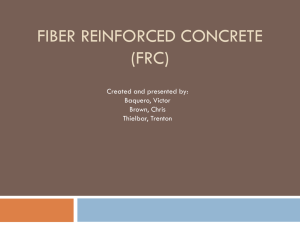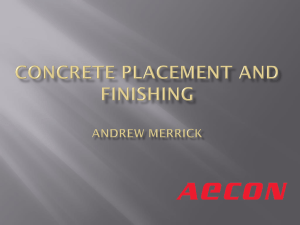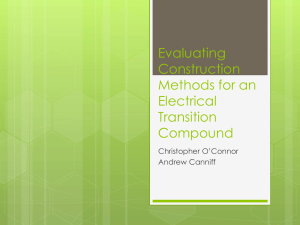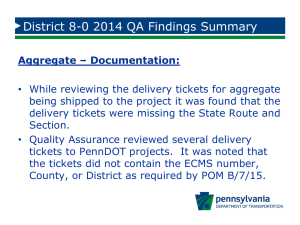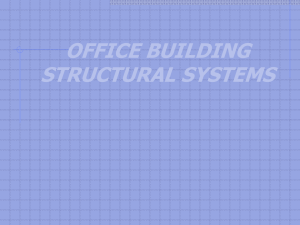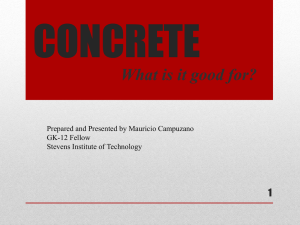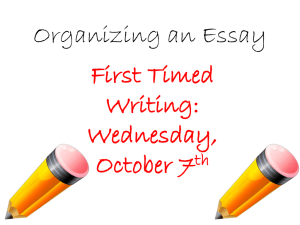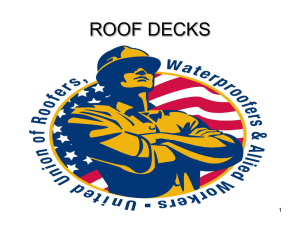Prestressed Concrete
advertisement
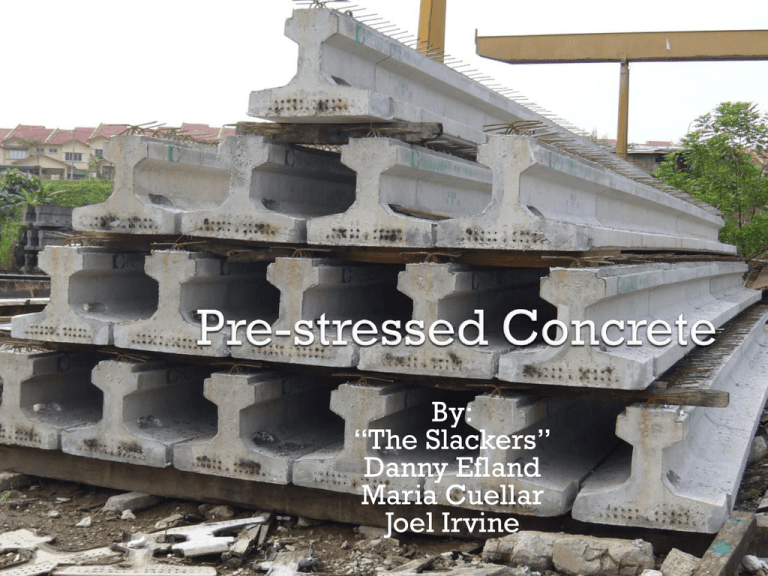
By: “The Slackers” Danny Efland Maria Cuellar Joel Irvine Definition: • “Pre-stressed concrete is a form of reinforced concrete that builds in compressive stresses during construction to oppose those found when in use.” In other words it is a combination of steel and concrete that takes advantages of the strengths of each material. http://www.youtube.com/watch?v=03Hb 9VCoEUo Pre-Tension Concrete: pre-stressing steel is tension stressed prior to the placement of the concrete and unloaded after concrete has harden to required strength. Bonded post-tensioned concrete: unstressed pre-stressing steel is placed with in the concrete and then tension stressed after concrete has harden to required strength Un-bonded post-tensioned concrete: differs from bonded post-tensioning by providing the prestressing steel permanent freedom of movement relative to the concrete. Pre-tensioned concrete is when the steel reinforcement is stressed prior to concrete being placed around the steel. Pretension is the easiest controlled of the bonded stressings with the least chance of error in the bonding process. Tension caused by the steel is spread throughout the length of the concrete since it is bonded within the concrete along the length of the member. Usually uses a mold which is able to resist the forces within the tendons. Which are more expensive than regular molds. Exception comes when the sides of the mold our anchored allowing mold to be created between the anchors without supporting stress. Concrete sample should be taken for every new mix so that strength obtained may be determined before cutting the tendons releasing the stresses onto the concrete. Since pre-tension may only be set once calculations for the camber must be correct. So, pre-stress takes a large amount of preplanning. Must consider self-weight deflections, pre-stress deflections, dead load deflections, and live load deflections. Since it may only tightened once and cannot be retightened the designer must also account for Creep of concrete, elastic shortening of concrete, shrinkage of concrete, relaxation of steel, slip at the anchorage, and friction losses due to intended and unintended (wobble) curvature in the tendons in calculations for the camber of the member in order to have lasting quality of the structure. Pretension requires for a slightly higher compression rating to cut the steel over post-tensioned .6 instead of .55 of the compressive strength of concrete at the time of initial pre-stress before accounting losses such as creep, relaxation and shrinkage, and redistribution of force effect. Mold capable of supporting stresses created by the steel is either delivered to job site or molds are located off site. Required or preplanned pre-stresses are determined and required reinforcement steel is determined and set. Proper concrete mix is determined and placed into molds. Self-consolidating concrete is massively used for ease of finishing. Concrete is allowed to cure and reach a needed strength great enough to support the tension in the steel without cracking. Then steel is cut and member is removed from mold and is ready to install. Process • Concrete is casted around a curved duct (usually corrugated), to allow room for the Tendon to be inserted. • After the concrete has hardened the tendons are pulled in tension and then wedged. • The duct is then injected with gout Advantages • Tendons are less likely to de-stress in accidents • Tendons can be easily 'weaved' allowing more efficient designs • Higher ultimate strength due to bond generated between the strand and concrete • No issues with maintaining the anchor In post-tensioning, the steel in the concrete is stretched after the curing process. Unlike bonded, un-bonded provides tendons freedom of movement by coating each tendon with grease and covering it with a plastic sheathing Tension on the concrete is achieved by the cables acting against the steel anchors that are buried in the perimeters of the concrete Advantages • Post-stress grouting is eliminated • Ability to de-stress the tendons • Economical • Replaceable • Simple stressing equipment Forms • Wires • Strands • Tendons • Cables • Bars Source of Force • Mechanical • Hydraulic • Electrical • Chemical Concrete remains un-cracked Reduction of steel corrosion Increases durability Good for pressure vessels High span to depth ratio (ex: 45:1 vs. 28:1) less dead load More economical www.todaysconcretetechnology.com www.utexas.edu www.dywidag-systems.com www.enotes.com www.tech9.com Indian Institute of Technology Madras “Prestressed Concrete Structures” QUESTIONS?


